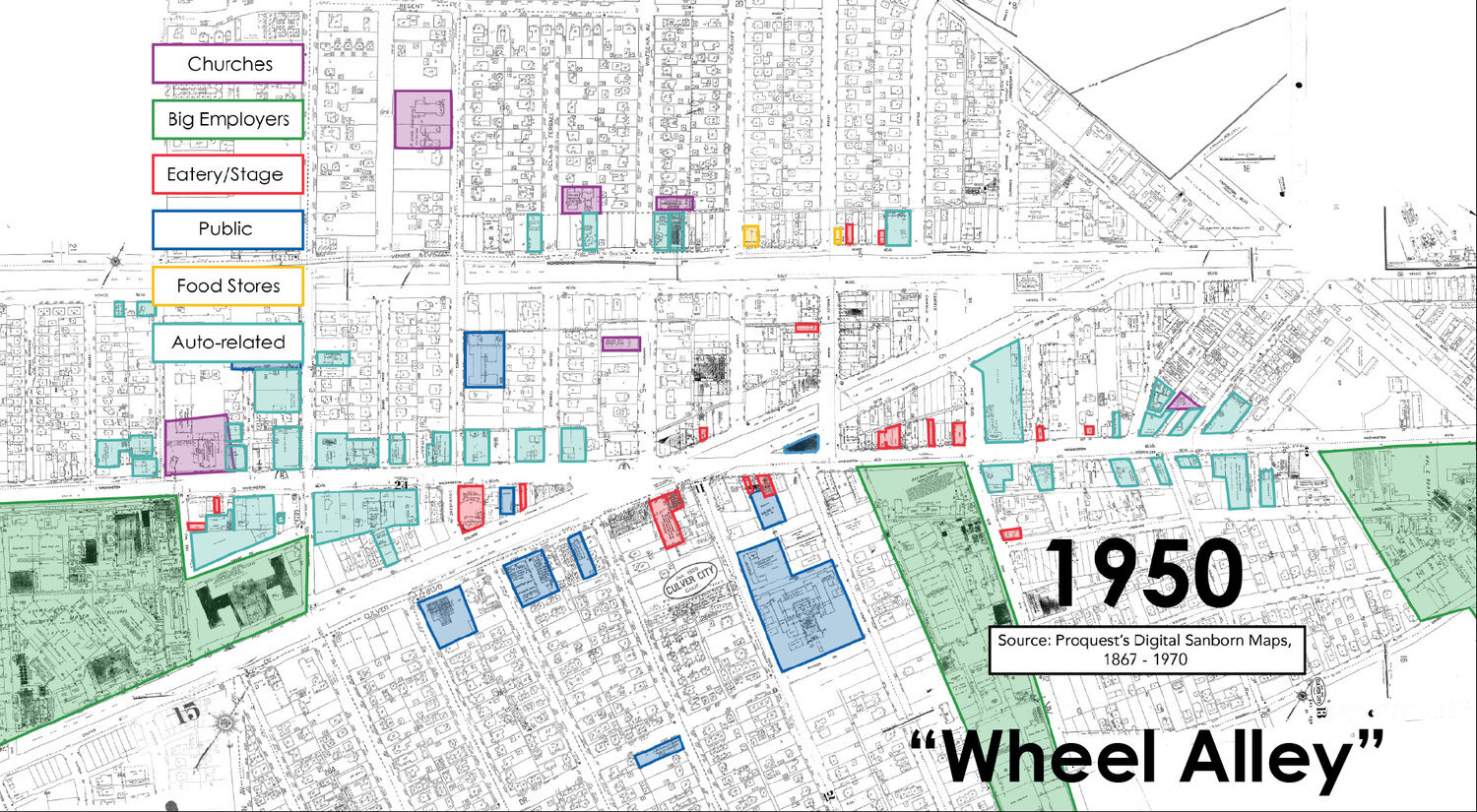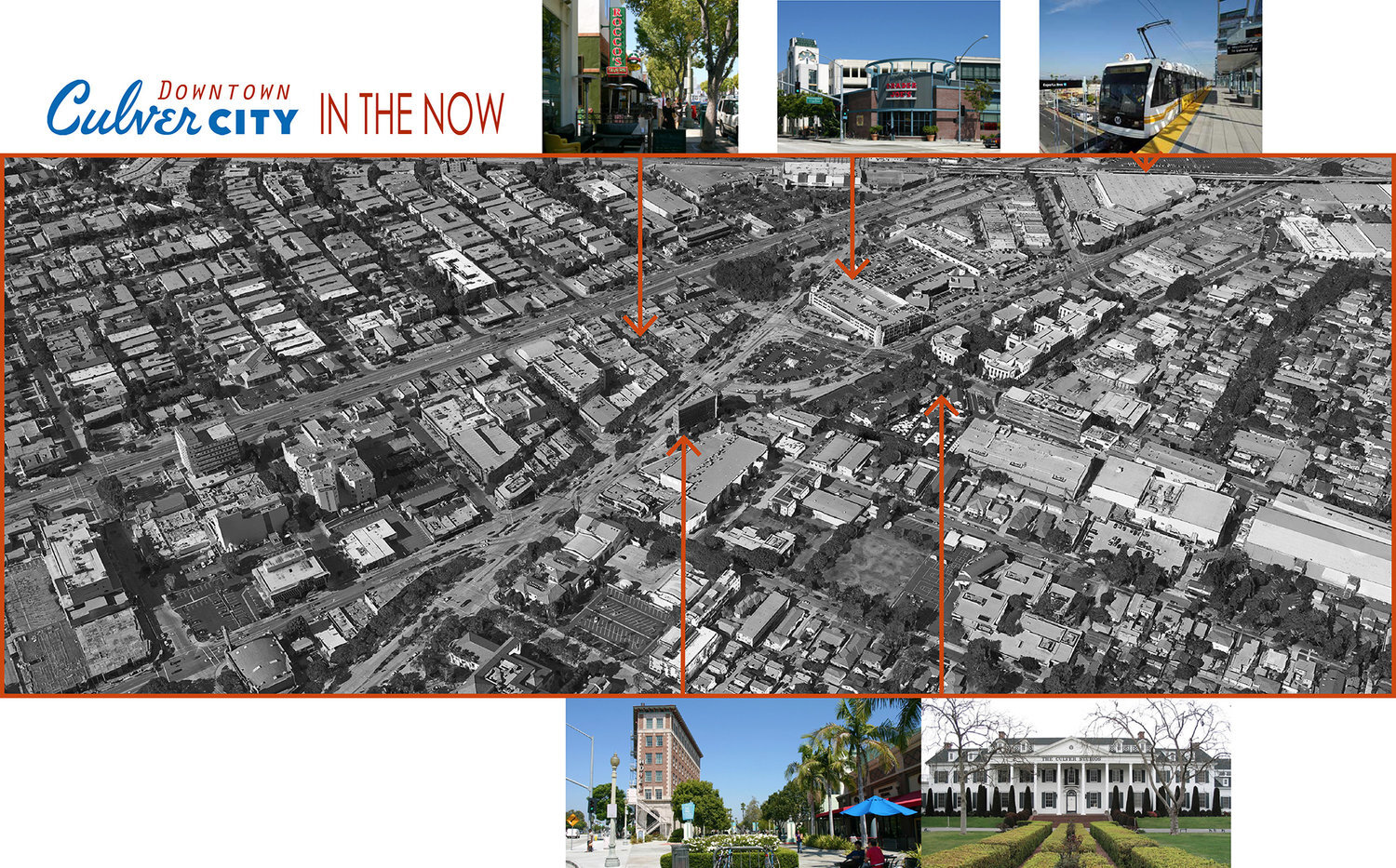To combat hipster gentrification in Downtown Culver City, California, I investigated cultural power dynamics in the 150-year evolution of its built environment and proposed a strategy for sustainable urban development to revive its rich multicultural legacy.
Role Writer, Researcher, Designer
For Harvard DES 3332 Urban Cultural Ecologies of Progressive Places
Instructors Susan Snyder, George Thomas
Date 2015
Service strategy, research, spatial design
How do you prevent hipster gentrification of the built environment?
Downtown Culver City is a curious place: halfway between Downtown Los Angeles and the Ocean, it is a collision between several divergent street grids and a crossroads between many diverse LA neighborhoods. Yet despite its charming mix of historic buildings and odes to its film production history, it is victim to boutique restaurant-dominated gentrification which has created a monotonous urban landscape that only scratches the surface of Culver City’s rich multicultural history and fails to welcome in the diversity of its surrounding communities.
Forensic Cultural Ecology
A seminar on power and place at the Harvard Graduate School of Design allowed me to craft a new reading of Downtown Culver’s built environment through the lens of its cultural evolution, and to propose a strategy for its future development that would help everyone—not just hipsters and foodies—to feel at home in its spaces.
Through “forensic cultural ecology” of Culver City’s history using primary source documents, such as survey maps and census data, I show that obsessions with romantic notions of ideal cultural heritage have pushed downtown’s built environment from heterogeneity into homogeneity on three separate occasions throughout its history.
1850 - 1900: Yankee Colony supplants the Wild West
In the late 1800s, complex American legal systems forced the diverse Mexican rancho communities to make way for colonies of New England and Iowa.
1910 - 1970: All-American Family supplants Progressive Utopia
In the mid-20th Century, science-rationalism and postwar consumerism forced Culver City’s progressive beginnings to give way to a landscape for the all-American family.
2004 - 2015: Gentrified Anywhere supplants Multicultural Nowhere
And now in the early 2000s, gentrification is supplanting downtown’s ethnic melting pot with a hipster haven of boutique restaurants.
Critical Conservation Strategy
I proposed that the key to breaking this cycle is through incubation of “collision buildings” to increase affordable housing, live-work mom-n-pop storefronts to add diversity and authentic charm to its retail offerings, conversion of its major intersections into pedestrian-only spaces, and a Watts Towers-inspired project of participatory social art that radiates from the center of downtown to give everyone the chance to creatively empower their diverse histories and experiences.
The Culver Dream: A Critical Conservation Strategy



























